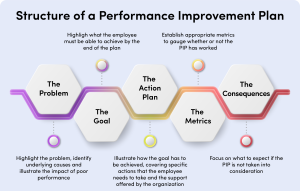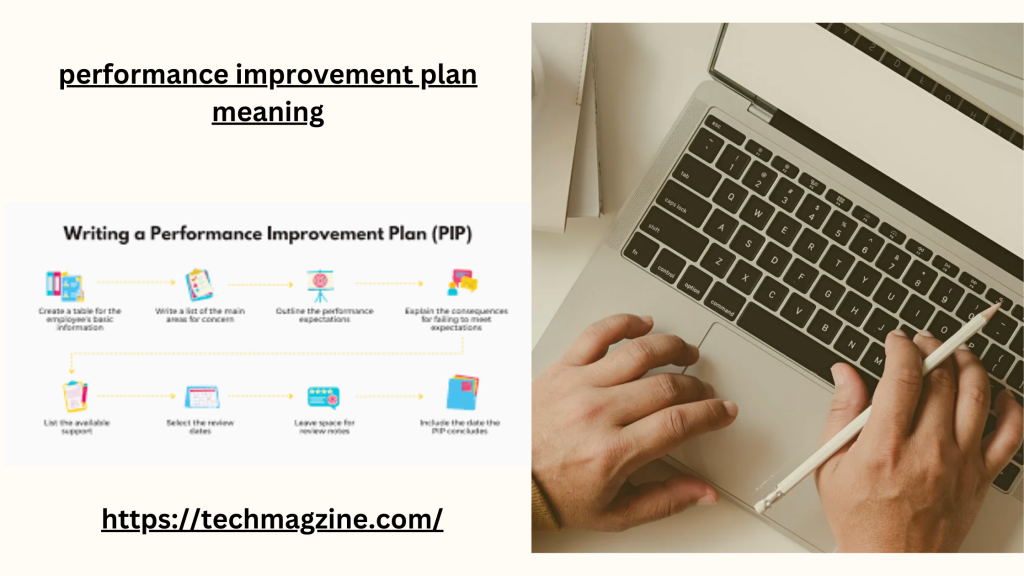Performance Improvement Plan meaning is a term that frequently surfaces in workplace environments, especially when an employee’s performance does not meet the expectations of the organization. In today’s competitive business landscape, maintaining a high-performing team is crucial for achieving success. Therefore, companies often use a Performance Improvement Plan (PIP) as a structured approach to help employees enhance their performance. This article will delve into the performance improvement plan meaning, its importance, and how it is implemented effectively.
What is the Performance Improvement Plan (PIP)?
The performance improvement plan meaning is quite simple—it is a formal document that outlines areas where an employee is underperforming and sets clear, measurable goals for improvement. PIPs are often used when informal feedback or coaching fails to bring about the necessary changes in performance. It provides employees with a roadmap to improve, offering them the guidance and resources needed to meet the company’s expectations.
A performance improvement plan meaning also includes a timeline for review, specific actions the employee should take, and an evaluation process to assess progress. The primary goal of a PIP is to help the employee succeed in their role rather than moving toward termination. However, if the employee fails to meet the requirements set out in the plan, termination may become a possibility.
Importance of Understanding the Performance Improvement Plan Meaning
Understanding the performance improvement plan meaning is crucial for both employers and employees. For employers, a PIP serves as a final attempt to help the employee before making tough decisions such as demotion or termination. For employees, the PIP offers an opportunity to rectify issues before they become irreversible, demonstrating their commitment to growth and improvement.
Benefits of a Performance Improvement Plan for Employers
- Clear Documentation: The PIP provides a formal record of the steps taken to assist the employee, which is valuable if further action, such as termination, is required.
- Improved Employee Performance: Often, a structured plan motivates employees to meet specific goals, leading to improved performance.
- Legal Protection: If a company needs to terminate an employee, a PIP can serve as documentation showing that reasonable steps were taken to support the employee before the termination.
- Enhanced Team Morale: Addressing underperformance can help boost overall team morale, ensuring that all team members are contributing equally.
Benefits for Employees
- Clarity of Expectations: The performance improvement plan meaning gives employees a clear understanding of what is expected of them and how they can meet these expectations.
- Access to Resources: Often, PIPs provide employees with additional support or resources, such as training or mentoring, which can help them improve.
- Opportunity for Growth: A PIP can be a turning point in an employee’s career, providing them with the feedback and tools needed for personal and professional growth.
- Preserving Employment: By following the steps outlined in the PIP, employees can avoid termination and maintain their employment status.
When is a Performance Improvement Plan Necessary?
The performance improvement plan meaning implies that it is used as a last resort before making any major employment decisions. While every company has different criteria for when a PIP is necessary, some common indicators include:
- Consistently Missing Targets: If an employee is consistently missing their performance targets, a PIP may be used to help them get back on track.
- Poor Attendance: Chronic absenteeism or tardiness that affects the employee’s ability to perform may trigger a PIP.
- Low Quality of Work: When an employee’s work is consistently below standard, a PIP may be implemented to address these issues.
- Behavioral Issues: In some cases, a PIP may address behavioral issues such as lack of teamwork, inappropriate behavior, or poor communication.
Key Components of a Performance Improvement Plan
The performance improvement plan meaning is most effective when certain components are included to ensure clarity and transparency. Below are the key elements that every PIP should contain:

- Specific Performance Issues: The plan should clearly outline the specific areas where the employee’s performance is lacking. This could be related to their work quality, deadlines, attendance, or behavior.
- Measurable Goals: For the employee to know what success looks like, the PIP should set clear and measurable goals. These could include completing a project by a certain deadline, improving the quality of reports, or reducing absenteeism.
- Timeline for Improvement: The performance improvement plan meaning includes a defined timeline during which the employee needs to make improvements. Common timeframes range from 30 to 90 days, depending on the severity of the performance issues.
- Support and Resources: A PIP should outline what resources or support the employee will receive to help them meet the set goals. This could include mentorship, additional training, or tools necessary to perform their job more effectively.
- Consequences of Not Meeting Goals: The performance improvement plan meaning also involves outlining the consequences if the employee does not meet the goals. This could range from extended review periods to termination, depending on the severity of the underperformance.
How to Implement a Performance Improvement Plan Effectively
Understanding the performance improvement plan meaning is one thing, but knowing how to implement it effectively is another. For employers and managers, the process of implementing a PIP should be handled with care to ensure that both parties are clear about the goals and expectations.
1. Open Communication
Before rolling out a PIP, have an open conversation with the employee. Explain that the PIP is not a punishment but an opportunity for growth. Emphasize that you are there to support them through the process.
2. Set Realistic Goals
The goals set out in the PIP should be challenging yet realistic. If the targets are too high, the employee may feel overwhelmed, leading to further underperformance. Conversely, if the goals are too easy, the purpose of the PIP may be lost.
3. Regular Check-Ins
Regularly check in with the employee throughout the PIP process to assess their progress. These check-ins should be supportive, offering feedback and encouragement. The performance improvement plan meaning becomes much more effective when managers are actively involved in the employee’s improvement journey.
4. Provide Constructive Feedback
Feedback should be specific, actionable, and focused on improvement. Rather than saying, “You need to do better,” provide concrete examples of what needs to change and how the employee can achieve those changes.
5. Document Everything
As part of the performance improvement plan meaning, thorough documentation is essential. Keep detailed records of the employee’s performance before, during, and after the PIP, as well as any conversations or meetings held throughout the process.
What Happens After the Performance Improvement Plan?
Once the PIP period is over, there are typically three possible outcomes, depending on the employee’s performance during the plan.
- Successful Completion: If the employee meets the goals set out in the PIP, they can return to their regular duties without further issues. Their successful completion may also be noted in their file as evidence of improvement.
- Extension of the PIP: In some cases, the employee may show improvement but not fully meet the set goals. In such scenarios, the PIP may be extended, giving the employee more time to improve further.
- Termination: If the employee fails to meet the expectations outlined in the PIP, termination may be the final step. At this point, the company will have documented evidence of their efforts to assist the employee, providing a legal safeguard if needed.
Common Misconceptions About the Performance Improvement Plan Meaning
Many employees fear PIPs, thinking they are a precursor to being fired. While this can sometimes be true, it’s not always the case. The performance improvement plan meaning is more focused on providing an opportunity for growth rather than being a punitive measure.
Additionally, some employees believe that PIPs are only for low-level or underperforming employees. In reality, anyone can be placed on a PIP if their performance slips, regardless of their level within the company.
Conclusion
The performance improvement plan meaning extends beyond being just a formal document—it’s a tool designed to help employees succeed and organizations maintain high performance. When implemented correctly, a PIP provides a structured, transparent pathway for improvement that benefits both the employee and the employer. It encourages growth, clarifies expectations, and ensures that every effort is made to support employees in their professional development. By understanding the performance improvement plan meaning, both parties can work together to achieve a positive outcome.
